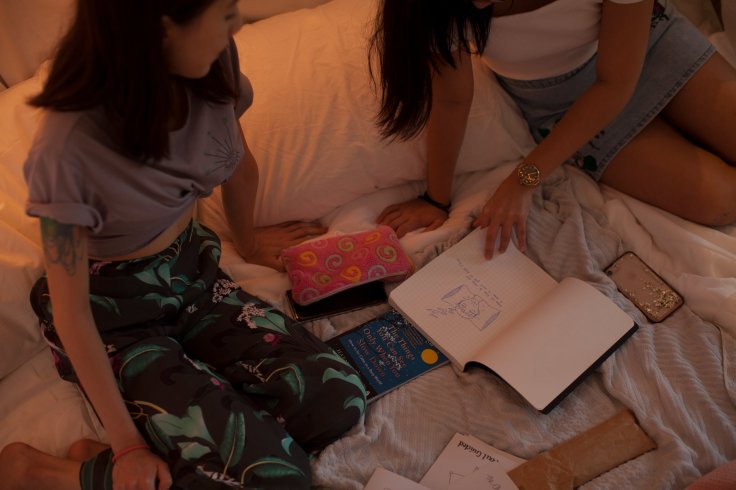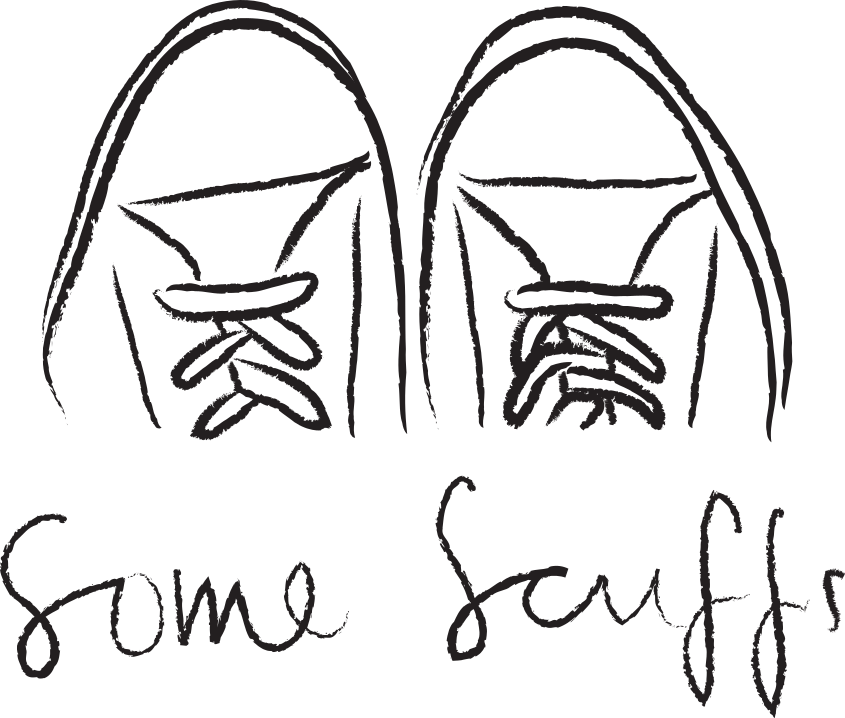It’s a simple idea with profound effects.
Early in November, I spent a weekend sitting on a heap of duvets and fluffy pillows, shrouded in bedsheets held up by bamboo poles and clothes pegs. Outside the structure stood a sign that read: “Need a break from humans? Breathe easy in our social anxiety-free blanket fort.”

Our fort was a relatively nondescript, 7 by 7-ft structure tucked in a quiet corner of a very crowded event space on the second floor of the ParkRoyal hotel on Pickering Street.
That weekend saw literally thousands of people who came for the annual Green is the New Black Festival to sample vegan food, listen to talks on sustainability and social innovation, and shop eco-friendly lifestyle and beauty products.
My objective was to offer shelter for people like me who might get anxious or exhausted from the jostling and buzz of activity at the festival. There was only one rule: kick off your shoes and get comfortable.
I was truly blown away by the sheer number of people who sought sanctuary, regardless of whether they were stressed out by whatever was happening outside. Dozens of people streamed in and stayed for 15 minutes to up to an hour at a time. There was never a moment when the fort was empty (so much so that for 8 hours straight, I couldn’t leave to get a glass of water or have a bathroom break).
There was only one rule: kick off your shoes and get comfortable.
Many of the festival-goers who came to the fort were not prone to freaking out around other humans at all. They were looking for various things: a novel experience, a place to rest their feet, to find some respite from not the festival but life itself, or to talk to somebody without fear of judgement. I had no way of predicting what each person who entered wanted from me, so all I could do was receive their presence with gratitude and an open mind.
Basically, my own code of conduct for the weekend was to shut up and listen.

Over the course of those two days, I had some of the most challenging, heartbreaking and moving encounters with strangers (now friends) that I’ve ever had. What was most astounding about the experience was the way people shed off all pretences and simply let themselves be vulnerable within the soft confines of the little fort.
They offered stories of joy and trepidation, victories and defeats that still reverberate in my mind, and lessons that I will always hold on to. It was such an honour to be entrusted with these anecdotes, deep reflections and, often, great wisdom – even from the youngest of guests, and I hold each one close to my heart.
I am hopeful that the people who stopped by also took something away from their time with me. (Preferably more than just “wasn’t that girl such a goddamn hippie”.)
“This fort is magical,” one visitor told me earnestly, before she stood to leave.
What was most astounding about the experience was the way people shed off all pretences and simply let themselves be vulnerable within the soft confines of the little fort.
What exactly made the blanket fort magical? I thought long and hard about this question for days after the event and these are the crucial components:
The element of play
I wasn’t expected nor did I want to offer advice or counsel to anyone. That wasn’t my job. My job was to hold space and bear witness to the people who entered. Part of that job requires me to create the environment to facilitate that – one that was safe, where you could let your guard down.
The cosiness of the blanket fort helped to provide both physical and mental safety. It invited you to return to an innocent and uncomplicated childhood where we didn’t have to maintain a preened public persona. And because it was fun (whoever tells you they don’t want to collapse in a pile of pillows just for fun is lying), people allowed themselves to enjoy the opportunity to be free in their own skin.
Perhaps the somatic effect of being cloistered in sheets with someone establishes trust and a sense of intimacy. But this definitely caused people to open up about themselves automatically. Even I was pleasantly surprised by how quickly people dove into their stories without any prodding.

Spontaneity
Again, nothing about the blanket fort spells “professional counselling session”. Come on, would you really trust a therapist who’s lounging on tons of blankets in her PJs? I did very little marketing – in fact, I didn’t put up any information about the project on my website or social media accounts.
The idea was for people who needed the space to seek it out on their own accord. And they did. If people came in expecting to be counselled, the experience would have been entirely different for everyone.
It was curiosity that compelled many people to come in, and curious people are exactly the kind who respond best to concepts that are foreign and at times bizarre (a blanket fort in the middle of a festival? Really?). These were my people. And I think I wouldn’t have had the kind of personal and honest conversations if they had the impression that I was just there to help distressed individuals.
The problem with planned programmes is that there’s always a script involved. The facilitator wants me to talk about this. Then she’ll respond by doing this. And so on. Free-form is where real connection happens. It’s an improvised dance that requires each party to be fully present, which in itself is a wonderful feeling in a world where it’s so hard even to get your friends to pay attention to you (and avert their eyes from their Instagram feed for like 2 seconds).
Empathy and kindness
Duh, right?
Maybe the people who came was already primed by the event – it was an eco-friendly, socially conscious festival after all – to be nonjudgemental and open, so whenever someone new entered the fort, the others welcomed them and embraced the new perspectives they brought.
Empathy is hard to teach, but it is contagious when you see it happening all around you in a confined space. We respond to other humans differently when we want to understand what their lived experiences are like before asserting our own points of view, and those around us register that difference and follow suit (i.e. no one wants to be that disagreeable asshole).
So I didn’t have to instruct anyone to act in a certain way, I just needed to maintain the balance of energy in the fort to ensure that everybody got what they needed from the experience. With the right constellation of people, this was easy.
But occasionally, a more dominant personality would enter, and I would need to redirect the flow of conversation to others in order to give everyone the opportunity to share. When someone was overly negative or cynical, I would gently encourage the optimists among us to lift us up with their counterpoints.
We respond to other humans differently when we want to understand what their lived experiences are like before asserting our own points of view, and those around us register that difference and follow suit (i.e. no one wants to be that disagreeable asshole).
The blanket fort was a life-altering project, and I don’t say this lightly. I’m eager to recreate it at my next pop-up (keep your eyes peeled) and hopefully add other elements to the installation to make it even more memorable.
As the year draws to a close now, this will be one of the biggest milestones in my passion project: taking it offline and bringing my message about total acceptance of self (wow, that sounded a lot less woo-woo in my head) out to the world. It showed me that each and every person, no matter how outgoing or popular they are, craves some form of authentic human connection.
Too many of us settle for superficial friendships, and even romantic relationships. And it’s funny that we have to turn to complete strangers to say what we truly think and feel. With strangers, we’re momentarily unchained from our histories and given permission to be our present selves. Even a transient friendship forged over a half hour in a blanket fort provides that release. We go our separate ways but the residue of the affirmation we receive (of who we are, of our mere existence) stays with us for a long time.


Leave a comment